I’ve been training in the martial arts for over 40 years, but I recently got a question that I had no good answer for.
Here was the question…
“If I’m lying on my side on the ground and getting kicked then is it better to reach out and try to block the kicks or just cover my head with my forearms until I can put my attacker back in guard?”
The thing is that I’ve never been taught anything about that situation. I’ve never drilled that situation. And I’ve never encountered it in sparring.
I had some ideas about what might maybe could possibly work, but hypotheses without actual data are just wild conjectures.
So to get closer to the answer I went tested it for you.
I put on MMA gloves, forearm guards, mouthguard, helmet with faceshield and grew my moustache out extra fuzzy. My training partner put on semi-soft rubber shoes and shin guards. And then we went to work.
Here’s the video of the process. It’s full of me getting kicked in the face to do research on your behalf!
On Youtube that same video lives here: ‘How to Survive a Curb Stomping (with Live Training Footage).’
Results of the Stomping and Kicking Pressure Testing
What seemed to work for me in the pressure testing was 3 things…
- Against a soccer kick to the head: slightly extend both arms and try to catch the shin on botho forearms
- Against a stomp to the head: cover up with both forearms using the ‘helmet’ (discussed in section 2 of my Surviving the Mount article)
- In all cases: pivot and get your feet between you and your opponent as soon as possible establishing the guard (or, possibly, go for a low single leg takedown)
Of course you don’t want to come to premature and incorrect conclusions based on any one study. In the scientific method it’s critical is to have other people repeat your experiments because any one researcher can be biased and any one study can be wong.
So if you manage to replicate these results in your own training, or if you find different answers entirely, then I’d be very interested in hearing about it!
What to Do After You’ve Blocked the Kick?
Let’s pick up on a very important point: your primary goal when getting kicked on the ground should be to pivot as fast as possible and get your feet between you and your opponent.
If you can do this right away then do it! Don’t wait for that first kick. Each additional kick he launches at you is one more chance that he’ll knock you out or severely damage you.
This is known as the guard position. More specifically it’s the ‘open guard’ because your legs aren’t clamped onto your opponent yet.
The basic concept here is that you’re using your legs to defend the more vulnerable parts of your body.
Here’s a pretty compelling video about why you should become conversatnt with the guard position…
What to Do After You’ve Put Your Opponent into the Guard
Once you’ve established the guard (regardless of whether that’s open guard, closed guard, or half guard) you’ve got 5 basic options..
Option 1: Survive/Stall
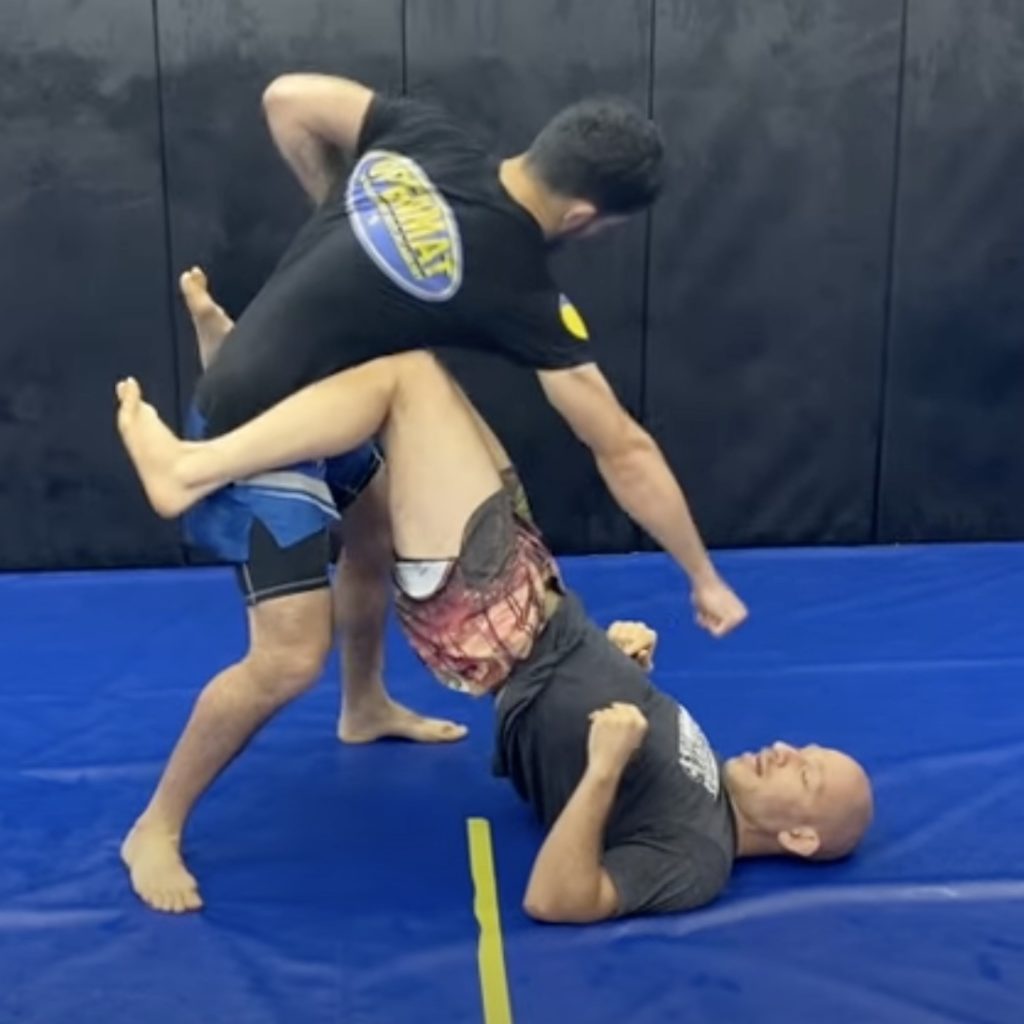
The first order of business is to use the guard to control the distance so that he can’t punch or kick you in the head or other vulnerable place.
Typically you’re going to do this by a) not letting him pass your guard, and b) either keeping him very close or very far away.
Not letting him pass your guard is a giant topic. It’s relatively easy to stop an unskilled fighter from getting past your legs (most will resort to some sort of leg toss pass) but against skilled fighters much more sophisticated maneuvers are required.
(That’s why I produced a very popular 6 volume instructional on just guard retention.)
The additional factor in the street (vs most BJJ training) is that you have to factor in strike defense as well. Click here for a good intro to using the guard to defend against strikes.
Bottom line: survive first, win later. In a real fight sometimes winning is sometimes as simple as just not losing.
Option 2: Stand Up
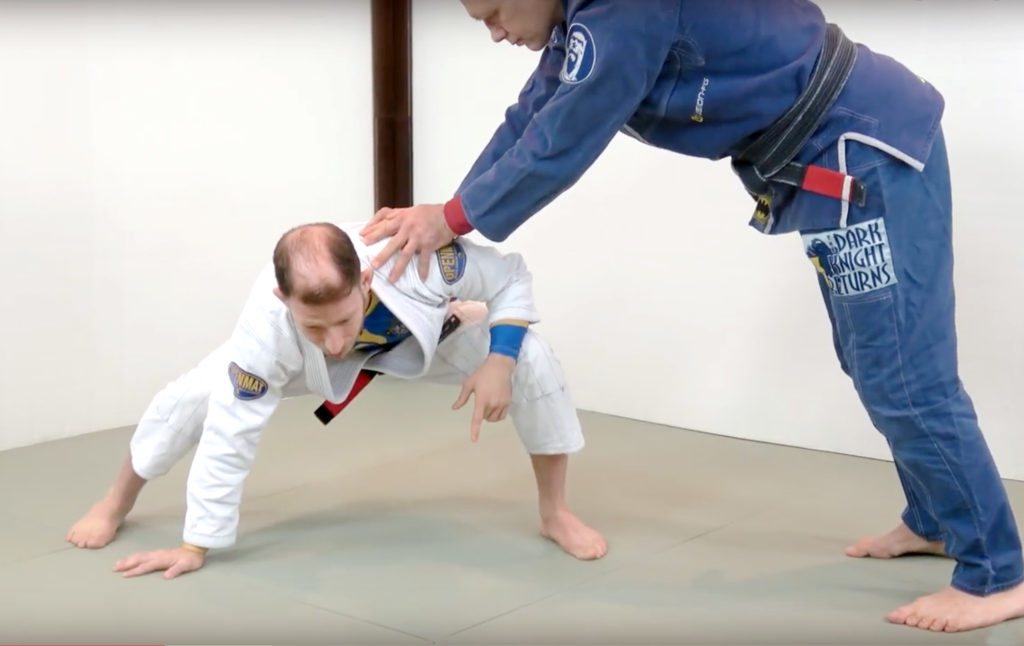
Often the best thing you can do from the guard is get back to your feet.
Once you’re on your feet you can punch, kick, clinch, takedown, find a weapon, and – ultra important – run away.
But getting to your feet can be a tricky business. If you do it wrong you’ll be pushed back to the ground and/or punted in the face.
Here’s a good intro to getting back to your feet correctly using the technical standup.
Option 3: Strike
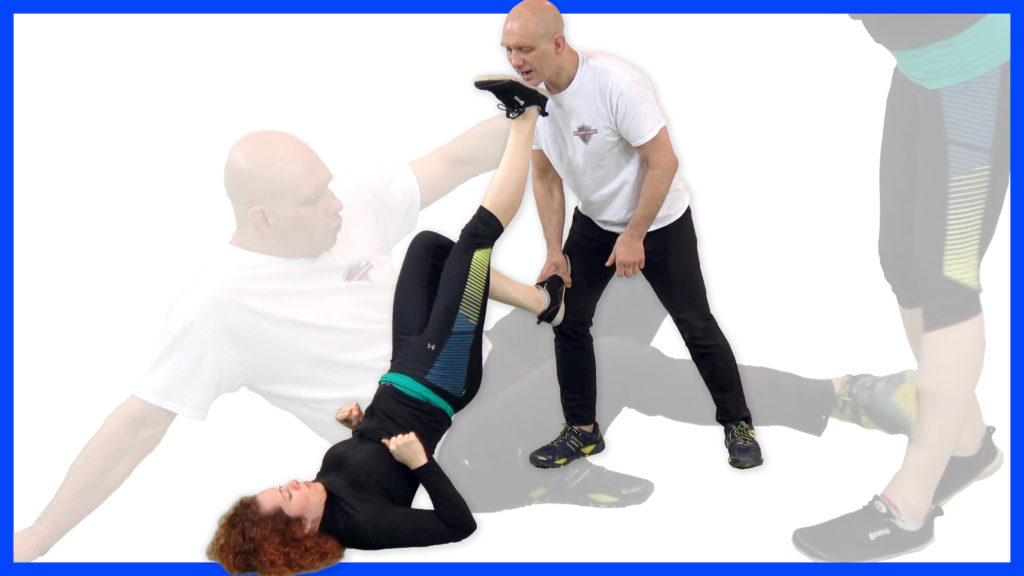
Let’s say you can’t get back to your feet. Or you think that you’re so outclassed in terms of size, skill or strength that getting back to your feet would be suicide.
Well, you can still attack your opponent from below!
Most typically you’ll use kicks to attack from guard (although at close range you can also use other weapons like elbows and knees).
Here’s a detailed video tutorial I put on Youtube teaching you the 4 Main Self Defense Kicks from the Guard.
Option 4: Sweep
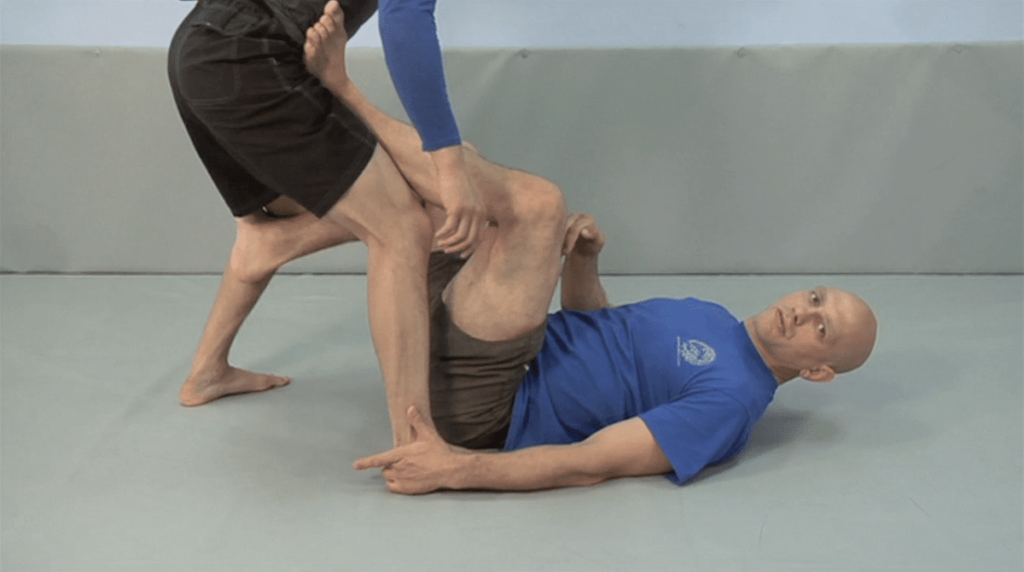
A ‘sweep’ is when you use your legs to knock an opponent over and get to the top.
Now you’ve essentially you’ve turned the tables on your opponent. You can press the fight with a ground and pound strategy, pass his guard and submit him, use a leglock, or run away (and you’ve got a 1 to 2 second head start on him because he needs to come to his feet before he can chase you).
The first two sweeps I suggest learning from the open guard are the ‘tripod sweep’ and the ‘tomahawk sweep.’
Here’s a detailed breakdown of both the tripod and tomahawk sweep and how they work together (from the ‘sweeps’ module of the Grappleart BJJ Master App).
Option 5: Submit
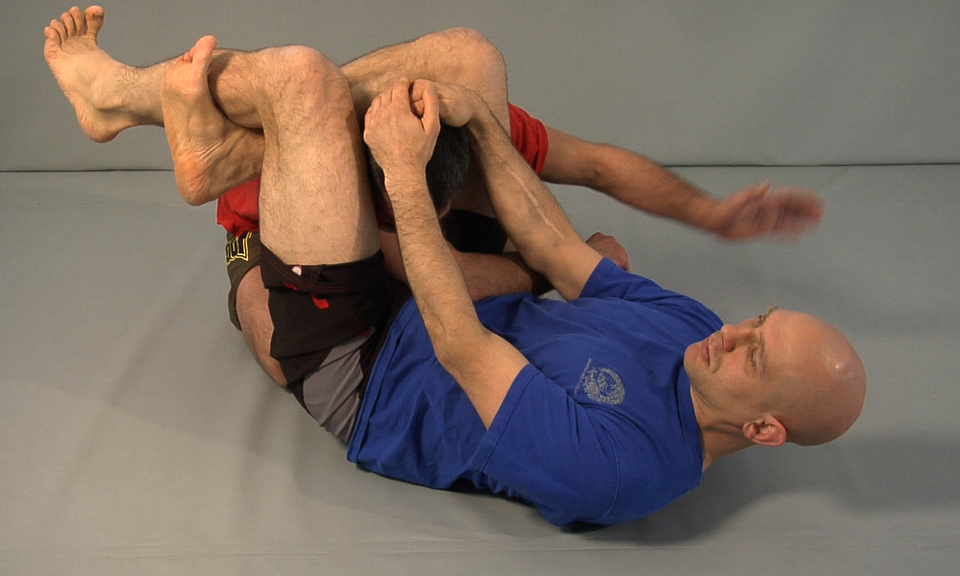
From the guard it’s always the chokes, leglocks and chokes that get the most attention. Making your opponent tap out is definitely considered the best way to win a jiu-jitsu match.
In a street situation submissions become a little more problematical.
First, latching onto a limb securely enough to break it can be problematical.
Secondly, even if you break it your opponent may not feel it because he’ll be all hopped up on adrenaline.
Third, you might get so fixated on your submission that you might not see him pull a weapon or be aware that his friends are arriving.
These problems makes the choke the submission of choice. Even if your opponent is on methamphetamine he can’t stay awake if the flow of blood to his brain is interrupted.
The best way to choke someone is to sweep them first and THEN choke them from the top. From the top position you have way more striking options AND it’s generally much easier to disengage and run away.
That being said, if an opportunity to choke someone from the bottom using a guillotine choke or triangle choke falls into your lap then you should definitely take it!
Click here for an intro to the two basic kinds of chokes you should learn.
More on Pressure Testing Your Techniques
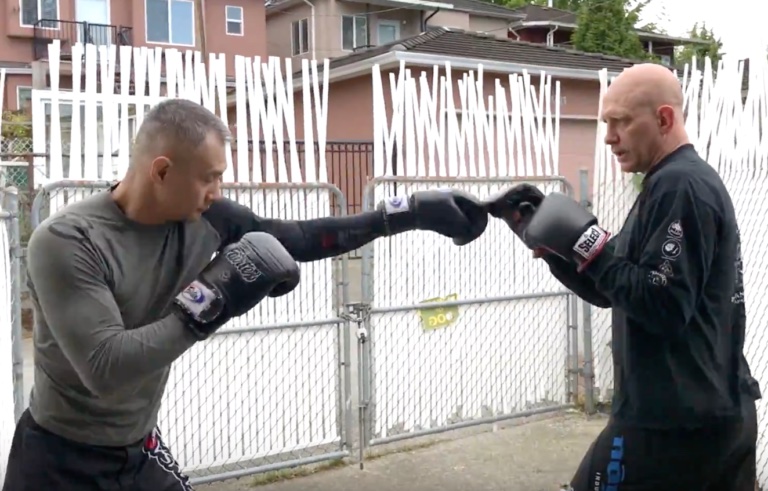
Training your techniques in a dead manner, never testing them against pressure and resistance, is the worst mistake in martial arts.
The key to making your martial art functional in a real life situation is to use a 5 step process…
- Solo training
- Partner training with low resistance
- Partner training with higher resistance
- Contested situational sparring
- Full sparring with all techniques
(This 5 stage developmental process is further explained in How to Make Your Martial Art Will Work in the Street article and video.)
By training against resistance you’ll find that many of the questions you had about applying the techniques simply answer themselves. For example it only took one kick to the head while covered up in the helmet for me to decide that reaching out to intercept the kicks was the better option.
One kick to the head answered what could have been hours of fruitless speculation.
Finally never be afraid of saying ‘I don’t know.‘
Not knowing something is a sign of humility and being open to further learning. And, by extension, people who think they know everything are arrogant assholes who have stopped learning altogether.
Instead of bullshitting someone if they ask you a question that you don’t know the answer to say, “Let’s find the answer together.”
If you’re interested in more on this topic then check out episode 347 of The Strenuous Life Podcast in which Burton Richardson and I went deep into the topic of using pressure testing in martial arts to find better answers.
Good luck with your training!
Stephan Kesting
P.S. If you love training martial arts then check out my free newsletter with my very best tips and tricks by entering your best email in the box below.
It’s great content, I promise!
Get My FREE Self Defense Tips by Email